Degreasing your plate
Before a number of processes are carried out on a metal matrix, the process of degreasing is helpful. By thoroughly cleaning all dirt and oil from the surface, a better result can be achieved. For example, oil or grease on the plate could affect the application of a ground/resist (applied for etching), stopping it from adhering to the plate properly, or allowing areas of the ground to break down in the acid, causing areas of foul bite. This is when the acid ‘bites’ the plate where it is not desired. An unclean surface may also prevent the acid from biting evenly.
The modern method of degreasing is basically the same as that described in Stijnman’s Engraving and Etching – rubbing with whiting (washed powdered chalk). The whiting absorbs oil, and, being slightly abrasive, also acts as a soft polish. Sometimes water, a weak acid such as vinegar or lemon juice, or an alkaline one such as ammonia is used to make the whiting into a paste, making it easier to rub across the surface.
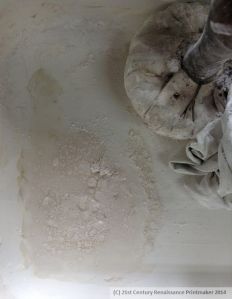
Above: making a paste from whiting and ammonia
The dry whiting, or whiting paste, is rubbed onto the plate for several minutes then rinsed off in water.
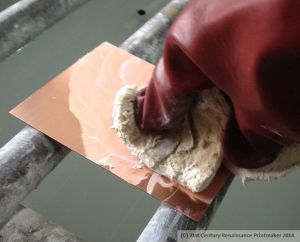
Above: applying the paste to the copper plate
The plate can then be dried with a soft, clean cloth or left to dry by itself. Often a residue of whiting will remain – this is easily wiped off with a cloth. The plate is then ready for the next process.
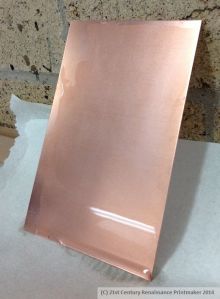
Above: propped against a wall to dry
Here are two photos of the same plate. In the first, a beeswax ground was applied to the plate without any form of cleaning having occurred prior. A large proportion of the wax has not adhered successfully – not only would it be hard to scribe through such an uneven ground, but the amount of resulting foul bite would mean the image will probably be useless.
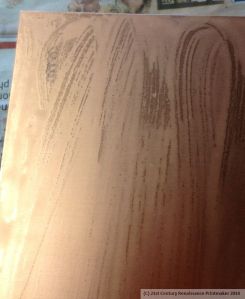
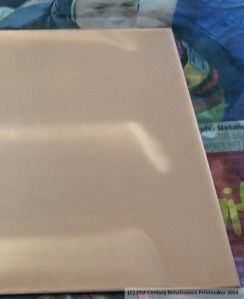
Above left: beeswax ground applied without prior degreasing, and right: beeswax ground applied after degreasing
In the second photo, the beeswax has been applied after degreasing and thorough drying – the ground is now more even, with no areas of wax resisting the plate. The only problem is that there are small areas where the beeswax is slightly thinner, which has the potential to break down in the acid faster. This is relatively unavoidable given that the application was by gently passing a chunk of beeswax over the plate as it was warmed on a hotplate.
Pingback: Using beeswax as an intaglio ground | 21st Century Renaissance Printmaker